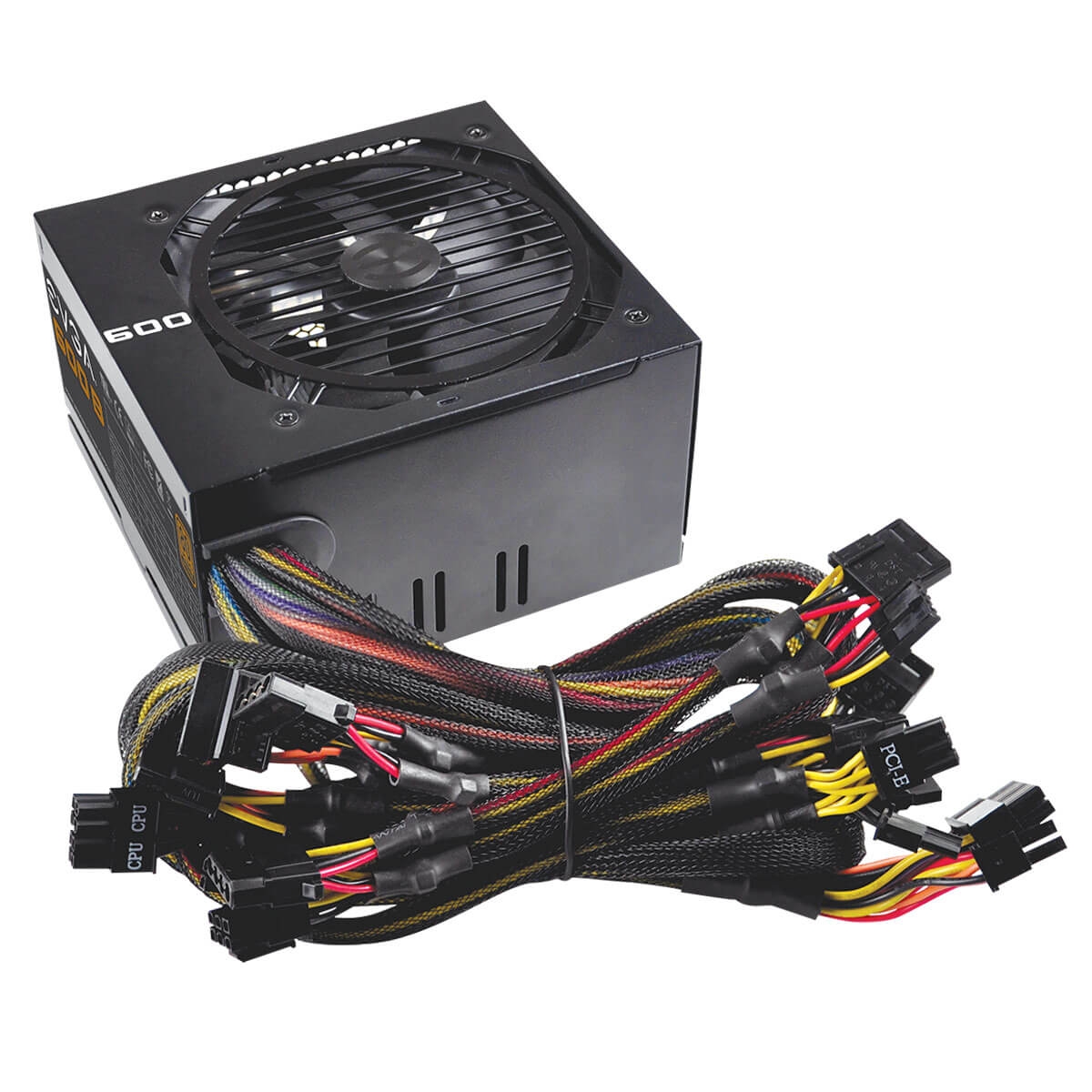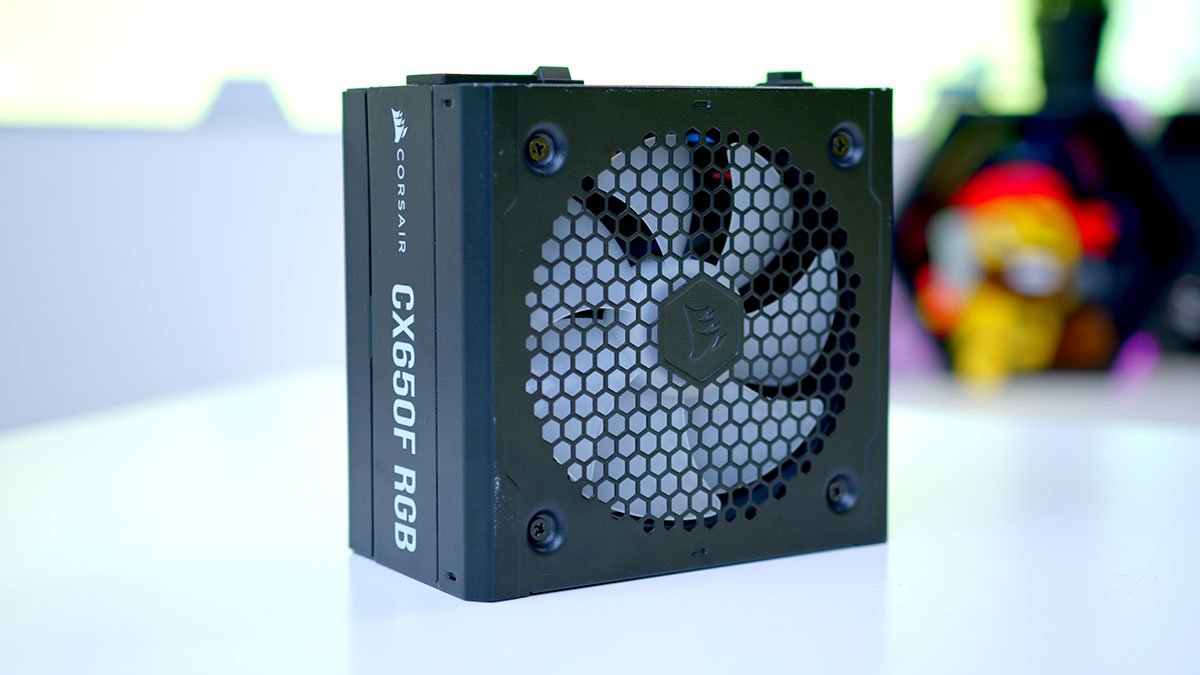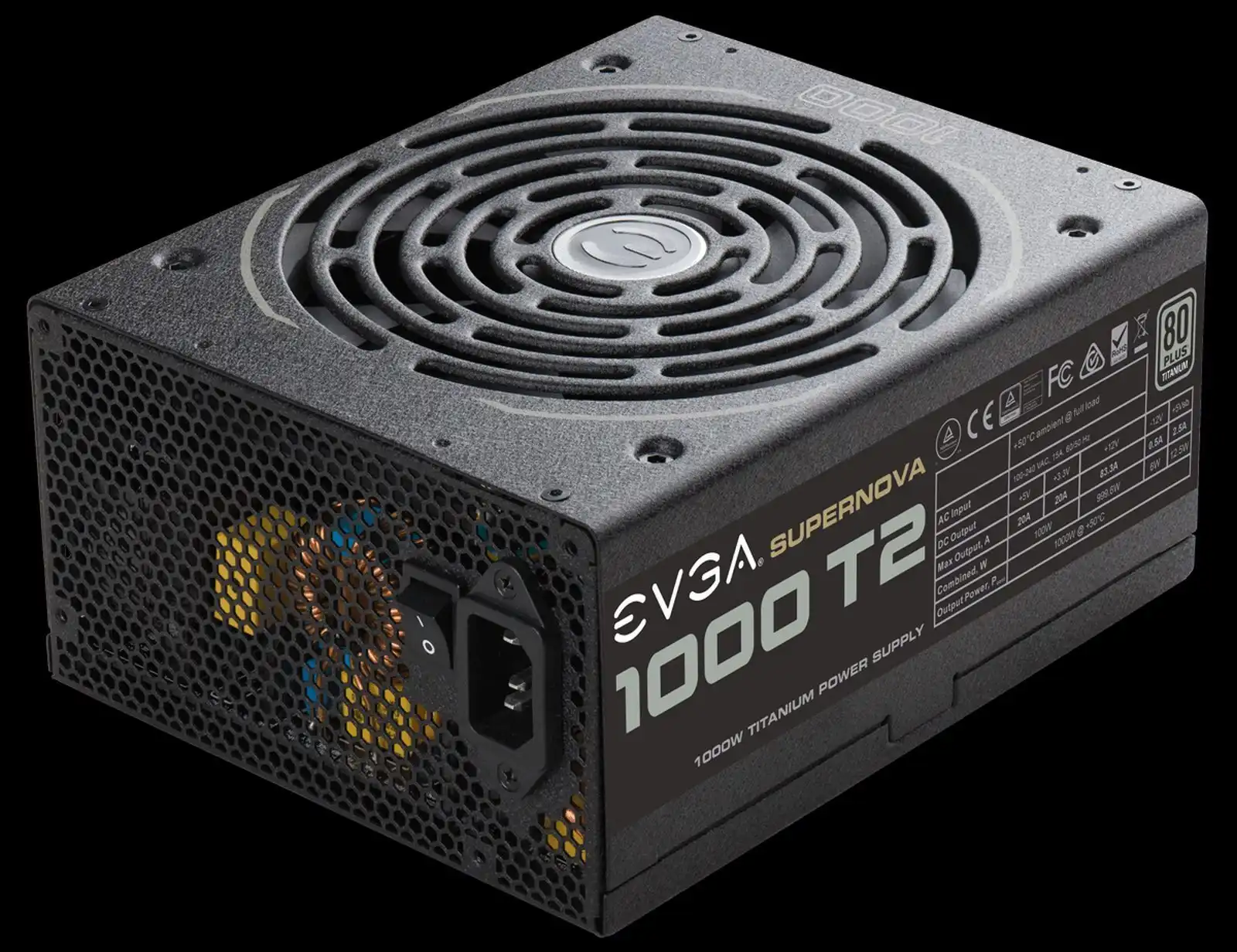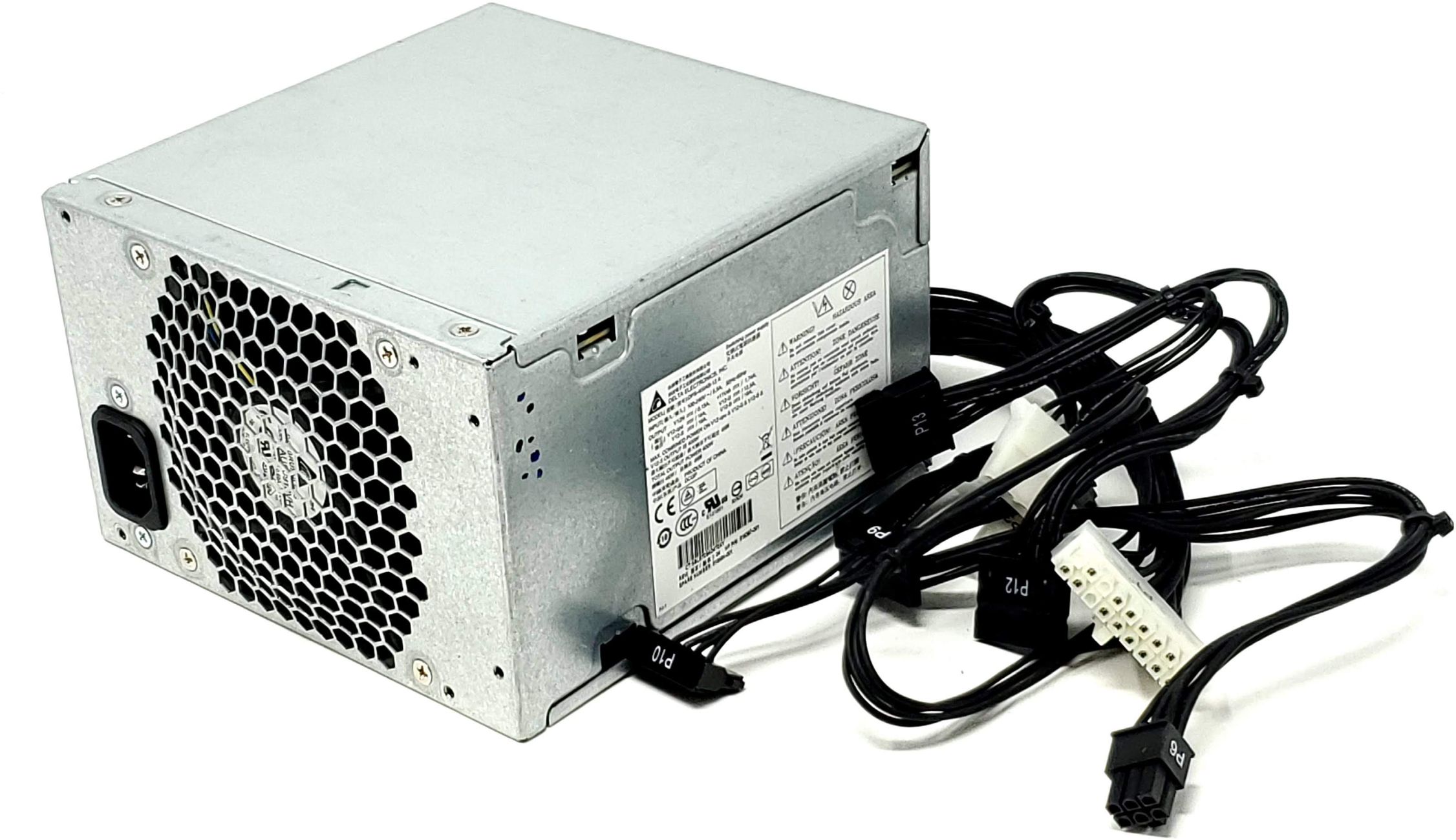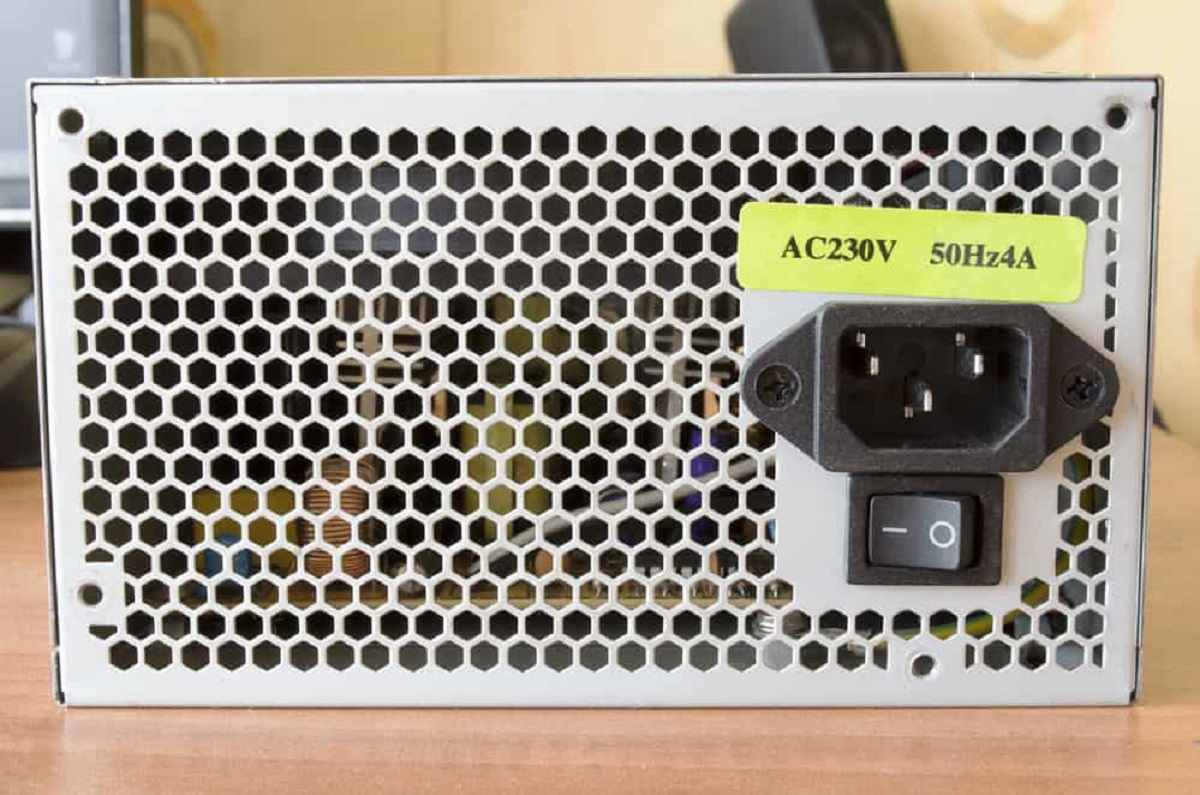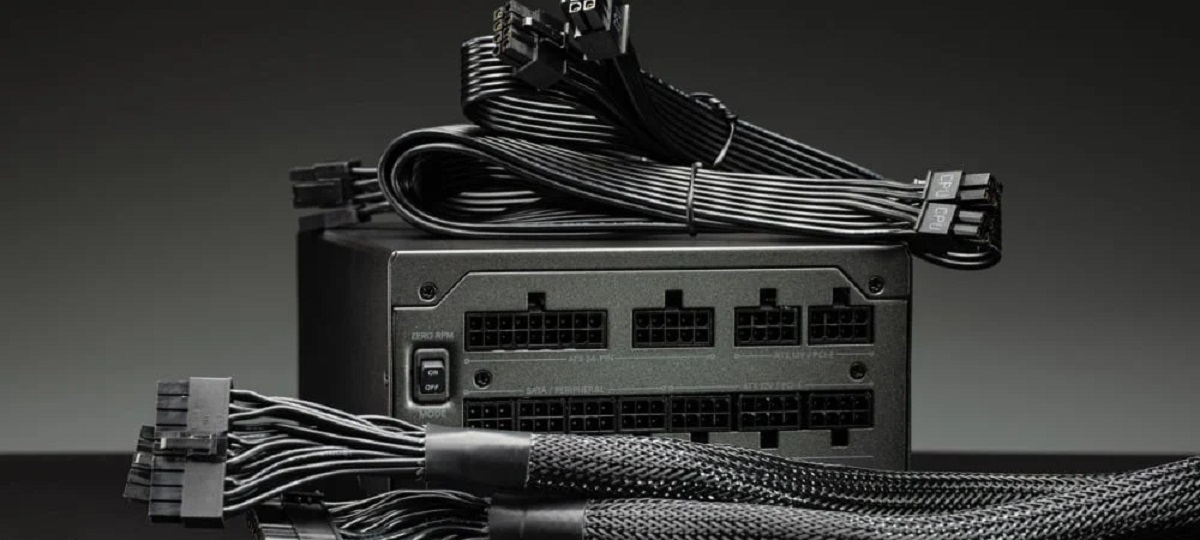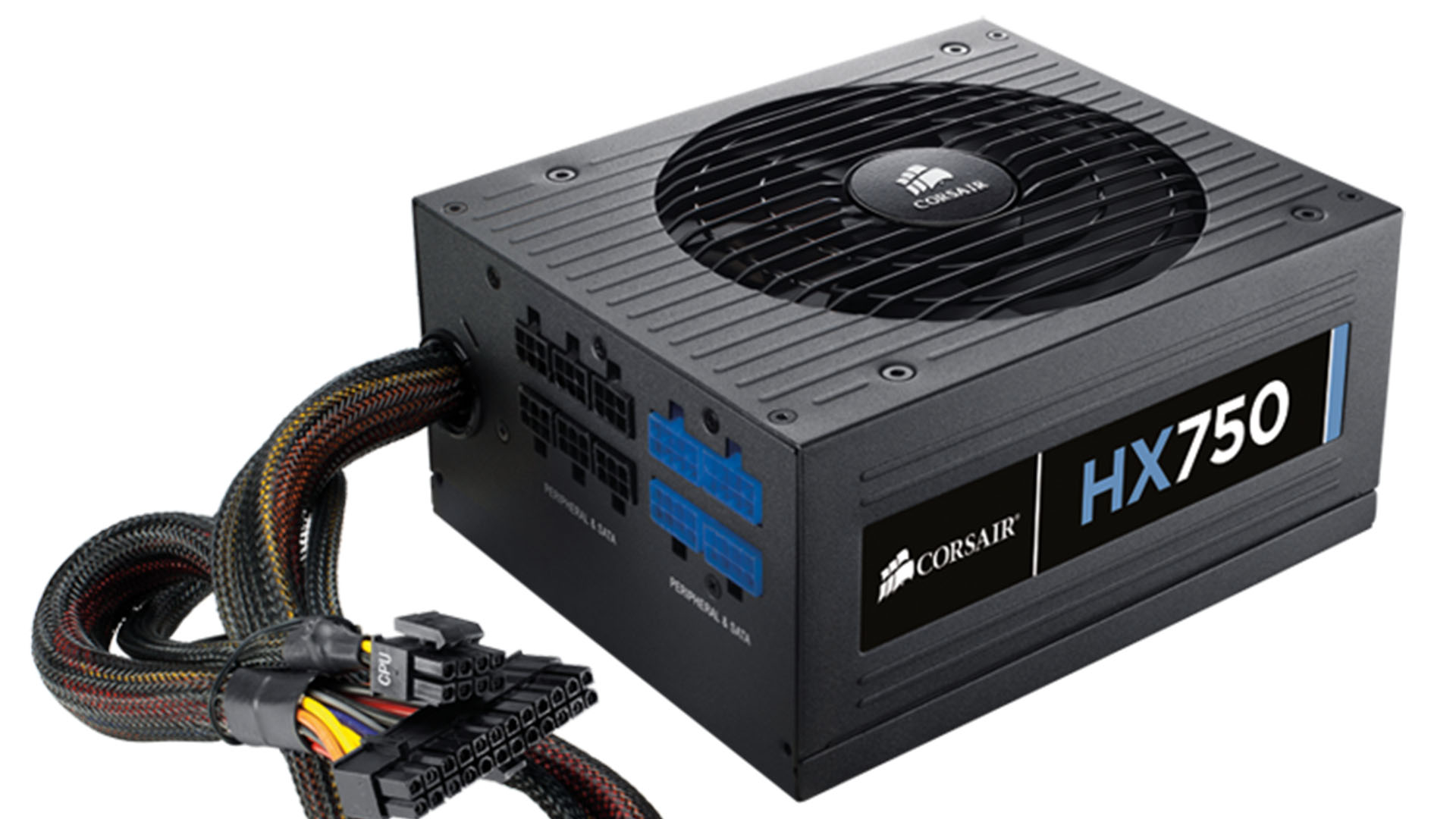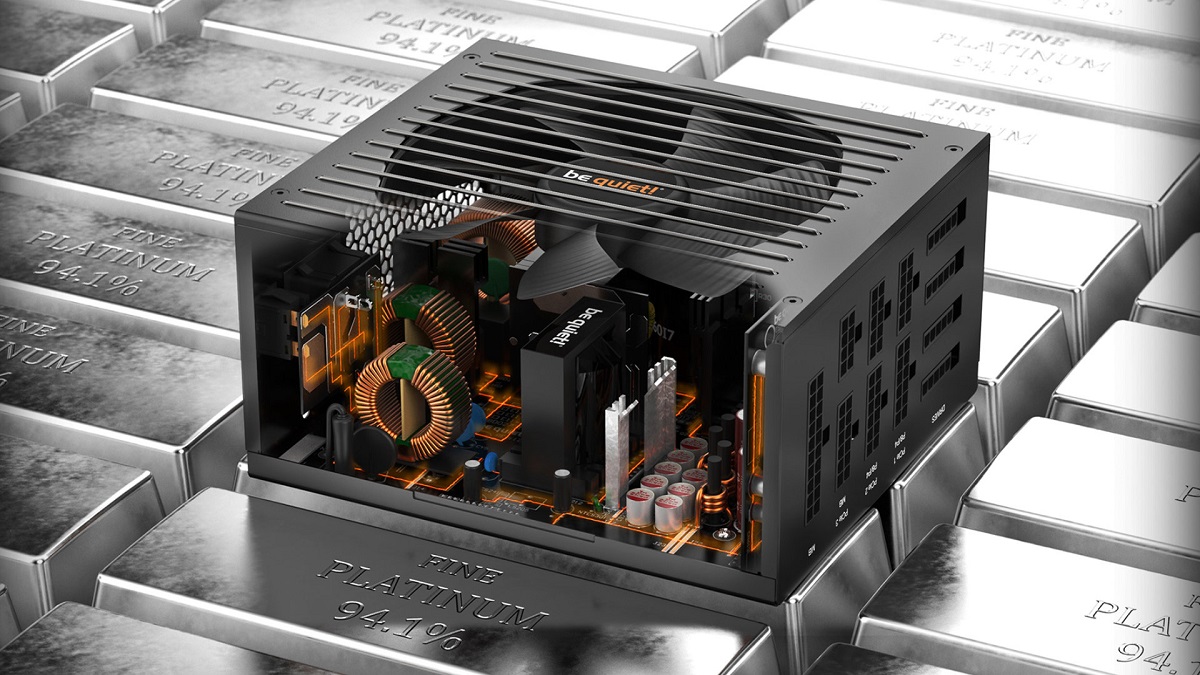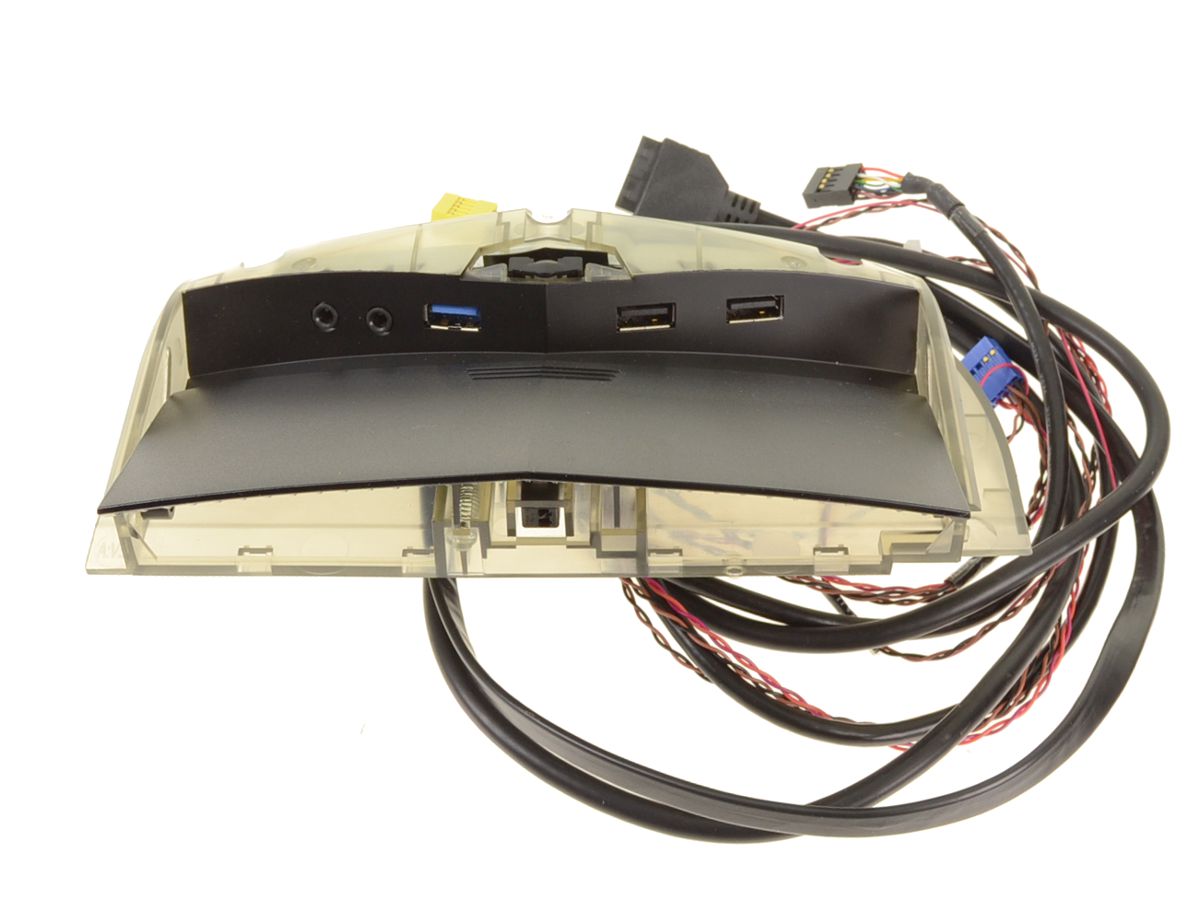Introduction
Choosing the right power supply unit (PSU) is crucial when building or upgrading your computer. The PSU determines the amount of power supplied to your system and plays a vital role in its overall performance and stability. Understanding the wattage requirements of your components is essential to ensure that your PSU can meet the power demands of your system without any issues.
When it comes to determining what wattage PSU you need, it’s important to analyze your power consumption accurately. Overestimating or underestimating can lead to inefficiencies, potential damage to your components, or even system shutdowns. To make an informed decision, you’ll need to consider various factors, including the power requirements of your CPU, GPU, motherboard, RAM, storage devices, and other components.
In this article, we’ll walk you through the process of calculating your power consumption, understanding the power requirements of different components, and ultimately selecting the right PSU wattage for your needs. By the end of this guide, you’ll have the knowledge and confidence to make an informed decision when it comes to purchasing a PSU for your computer.
Understanding Wattage
Before delving into the process of determining the wattage requirement for your PSU, it’s important to understand what wattage represents in the context of computer power supplies.
Wattage is a measure of the amount of power consumed by a device. In the case of PSUs, it indicates the maximum power that the unit can deliver to your computer’s components. Higher wattage generally means that the PSU is capable of providing more power, which is important for systems with high-performance components or those that require a greater amount of power overall.
However, it’s important to note that higher wattage doesn’t necessarily equate to better performance. A PSU should be chosen based on the specific power requirements of your components rather than solely focusing on the highest wattage available. Using a PSU with significantly higher wattage than necessary can lead to inefficiencies and increased energy consumption.
It’s also worth mentioning that PSUs come with different efficiency certifications, such as 80 Plus Bronze, Silver, Gold, Platinum, and Titanium. These certifications indicate the PSU’s ability to convert AC power from your outlet into DC power for your components. Higher efficiency ratings mean that the PSU wastes less energy as heat, resulting in reduced energy costs and a more environmentally-friendly system.
Understanding the wattage of your PSU provides the foundation for determining the appropriate power supply for your system. In the following sections, we will explore how to calculate your power consumption and take into account the power requirements of your individual components.
Calculating Your Power Consumption
In order to determine the wattage requirements for your PSU, you need to calculate your power consumption accurately. This involves considering the power requirements of each of your computer components and adding them together.
One of the simplest ways to calculate power consumption is by using an online PSU calculator. These calculators allow you to select your specific components and provide an estimation of the total power required. However, for a more accurate calculation, you can follow these steps:
- Start by identifying the power consumption of your CPU, GPU, motherboard, RAM, storage devices, and any other components that draw power directly from the PSU. You can find this information in the product specifications or by searching online.
- Once you have the power consumption for each component, multiply the watts by the number of components of that type that you have. For example, if you have two hard drives that consume 10 watts each, the total power consumption for hard drives would be 20 watts.
- Next, add up the power consumption of all the individual components to get the total power requirement for your system.
It’s important to note that component power consumptions can vary depending on the workload and usage scenario. For instance, a high-end CPU and GPU may consume more power during intensive tasks like gaming or video editing compared to idle or light workload situations.
By accurately calculating your power consumption, you can get a clearer idea of the minimum wattage requirement for your PSU. It’s advisable to choose a PSU with a slightly higher wattage than your calculated power consumption to ensure stability and accommodate any future upgrades you may make.
Considering the Components
When determining the wattage requirements for your PSU, it’s important to consider the power requirements of each individual component in your computer system. Let’s take a closer look at some of the major components and their power consumption:
- CPU Power Requirement: The power consumption of the CPU depends on the model and its level of performance. Higher-end CPUs generally require more power, especially if they are overclocked.
- GPU Power Requirement: Graphics cards can be power-hungry, particularly high-performance models designed for gaming or professional applications. It’s essential to check the power requirements of your GPU to ensure your PSU can handle it.
- Motherboard Power Requirement: The motherboard itself doesn’t consume a significant amount of power, but it provides power to other components. It’s important to ensure that your PSU can deliver sufficient power to the motherboard and other connected devices.
- RAM Power Requirement: RAM modules generally consume very little power individually. However, multiple modules or high-capacity memory configurations can slightly impact overall power consumption.
- Storage Power Requirement: Hard drives and solid-state drives (SSDs) have varying power requirements depending on their capacity and technology. While the power consumption of storage devices is comparatively low, it’s still important to take them into account.
- Other Components Power Requirement: Other devices such as optical drives, cooling fans, LED lighting, and peripherals can contribute to the overall power consumption of your system. Consider their power requirements when calculating your PSU wattage.
Keep in mind that power requirements may differ between manufacturers, models, and generations of components. It’s important to refer to the product specifications, user manuals, or manufacturer websites for accurate power consumption information.
Additionally, if you plan on upgrading any components in the future, it’s wise to factor in their power requirements as well. Taking into account potential expansions or upgrades can help determine the appropriate wattage for your PSU that will accommodate your future needs.
CPU Power Requirement
The power requirements of your CPU play a significant role in determining the wattage needed for your PSU. The CPU is one of the most crucial components in your system, responsible for executing all the tasks and calculations necessary for your computer to function.
The power consumption of the CPU depends on various factors, including the model, architecture, clock speed, and number of cores. Higher-performance CPUs typically require more power to deliver optimal performance.
When researching the power requirements of your CPU, it’s important to consider both the base power consumption and the maximum power consumption under heavy workloads or when overclocked. The base power consumption reflects the power consumption under normal operating conditions, while the CPU’s maximum power consumption represents the peak power usage.
Manufacturers often provide information about the power requirements of their CPUs in their product specifications or documentation. You can also find power consumption benchmarks and comparisons online to get a better understanding of how different CPU models stack up in terms of power consumption.
It’s worth noting that power requirements can vary significantly between different CPU models, even within the same brand or product lineup. So, make sure to check the power specifications specific to your CPU to accurately calculate the power consumption.
When selecting a PSU for your computer system, it’s recommended to choose a unit that can comfortably handle the power needs of your CPU. Opting for a PSU with a slightly higher wattage than your calculated CPU power consumption is advisable to ensure stable and reliable performance.
Keep in mind that if you plan to overclock your CPU or anticipate other power-intensive tasks, you may need to account for additional power overhead. Overclocking, in particular, can significantly increase a CPU’s power requirements, so make sure to consider this when selecting your PSU wattage.
GPU Power Requirement
When considering the power requirements for your PSU, the GPU (Graphics Processing Unit) plays a crucial role, especially if you’re building a gaming or graphics-intensive system. The GPU is responsible for rendering and processing the graphics on your computer.
Graphics cards come in various models and configurations, each with different power consumption requirements. The power demands of a GPU can vary based on factors such as the chipset, memory capacity, clock speeds, and cooling solution.
High-performance GPUs designed for gaming and content creation tend to have higher power requirements. These GPUs often require dedicated power connectors from the PSU, such as 6-pin or 8-pin connectors, in addition to drawing power from the PCI Express slot.
When researching the power requirements for your GPU, you can refer to the manufacturer’s specifications or product documentation. These resources typically provide information about the recommended PSU wattage or specific power connector requirements for the GPU.
It’s important to note that power-hungry GPUs can consume a significant amount of power, especially when running demanding games or GPU-intensive applications. Therefore, it’s crucial to ensure that your PSU has sufficient wattage to meet the GPU’s power needs.
When calculating the total power consumption for your system, be sure to consider the power requirements of your GPU along with other components. By accurately accounting for the GPU’s power consumption, you’ll be able to choose a PSU with the appropriate wattage, ensuring stable and reliable performance for your gaming or graphics-oriented tasks.
Additionally, if you plan on running multiple GPUs in a CrossFire or SLI configuration, be sure to account for the combined power requirements of all the GPUs. SLI or CrossFire setups can significantly increase the power consumption of your system, so it’s essential to choose a PSU with enough wattage and multiple dedicated power connectors to support the configuration.
Motherboard Power Requirement
The power requirements of a motherboard may not be as significant as those of the CPU or GPU, but it is still an essential consideration when determining the wattage needed for your PSU. The motherboard acts as the central hub connecting all the components in your computer system and provides power to various parts of your system.
The power consumption of the motherboard itself is relatively low compared to other components. However, it’s important to ensure that your PSU can deliver sufficient power to the motherboard and other devices connected to it.
When it comes to power requirements, motherboards typically have different connectors to distribute power to various components, such as the CPU, RAM, and expansion slots. The most important power connector on a motherboard is the ATX power connector, which supplies power to the motherboard and its components.
The ATX power connector usually consists of a 20-pin or 24-pin (for modern motherboards) connector. This connector supplies power to the motherboard’s voltage regulators, which, in turn, provide power to the CPU, RAM, and other components on the motherboard.
It’s crucial to ensure that your PSU has the appropriate ATX power connector to match your motherboard. Most PSUs today come with a 24-pin ATX power connector, which is compatible with modern motherboards. However, older motherboards may require a 20-pin ATX connector, so it’s essential to verify compatibility before purchasing a PSU.
When selecting a PSU for your system, it’s generally recommended to choose a unit that provides stable and reliable power to your motherboard. An insufficiently powered motherboard may result in system instability, crashes, or even damage to the components.
While the power requirements of the motherboard itself are minimal, it’s important to bear in mind that the power demands of the components connected to the motherboard, such as the CPU and GPU, should also be considered. By accurately calculating the power consumption of your CPU, GPU, and other components, you’ll have a better understanding of the overall power requirements and can select an appropriate PSU to ensure reliable performance for your system.
RAM Power Requirement
When determining the power requirements for your PSU, it’s important to consider the power consumption of your RAM modules. While RAM modules typically have lower power consumption compared to other components in your system, it’s still worth factoring them into your calculations.
The power consumption of RAM is influenced by various factors, including the type of memory module (DDR3, DDR4, etc.), the number of modules installed, and the frequency and voltage settings. However, the power consumption of RAM is generally quite low, with most modules ranging from around 1.2 to 1.5 volts.
When calculating the power consumption of your RAM, multiply the voltage (in volts) by the current (in amperes) to determine the power consumption in watts. However, as the power consumption of RAM is typically quite low, the contribution to the overall system power requirements is minimal.
In most cases, the power consumption of RAM modules doesn’t significantly impact the overall wattage requirements for your PSU. However, if you have a large number of high-frequency or high-capacity RAM modules, or if you are running memory-intensive tasks, it’s worth considering their power consumption in your calculations.
It’s also important to note that the power consumption of RAM can vary depending on the workload and the specific memory modules you are using. For example, overclocking your RAM or running memory-intensive applications can slightly increase power consumption.
When choosing a PSU, it’s generally recommended to focus on the power requirements of other major components like the CPU and GPU, as they have a more significant impact on system power consumption. However, it’s always good to consider the power requirements of your RAM modules to ensure overall system stability.
Ultimately, the power consumption of RAM is typically not a major factor in determining the wattage requirements for your PSU. As long as you choose a PSU that can effectively power your CPU, GPU, and other components, your RAM modules should receive sufficient power to operate efficiently.
Storage Power Requirement
When determining the power requirements for your PSU, it’s important to consider the power consumption of your storage devices. While the power consumption of storage devices is generally low compared to components like the CPU and GPU, it’s still worth factoring them into your calculations.
Both hard disk drives (HDDs) and solid-state drives (SSDs) have different power requirements based on their capacity, speed, and technology. HDDs typically consume more power than SSDs due to their mechanical components, such as spinning disks and moving read/write heads.
For HDDs, power consumption can vary depending on factors like rotational speed (RPM) and the number of platters. Higher RPM drives and drives with more platters tend to consume more power.
On the other hand, SSDs have no moving parts and consume less power compared to HDDs. They are more energy-efficient overall and can contribute to lower power consumption in your system.
When selecting a PSU, it’s important to consider the power requirements of your storage devices, especially if you have multiple drives installed. Additionally, if you are running RAID configurations or using external storage devices, make sure to include their power consumption in your calculations as well.
It’s crucial to note that while the power consumption of storage devices is relatively low, the overall power requirements may increase during activities such as data transfers or when the drives are under heavy read/write loads. Therefore, it’s advisable to choose a PSU that can comfortably handle the power needs of your storage devices during peak usage scenarios.
While storage devices contribute to the overall power consumption of your system, they typically have a minimal impact on the choice of PSU wattage. The power requirements of your CPU and GPU should take precedence in your decision-making process, as they have the most significant influence on overall power consumption.
By considering the power consumption of your storage devices in conjunction with other components, you can ensure that your PSU adequately powers your entire system for optimal performance and stability.
Other Components Power Requirement
When determining the power requirements for your PSU, it’s vital to consider the power consumption of other components in your system. While components like the CPU, GPU, and storage devices typically have a more significant impact on power consumption, it’s important not to overlook the power needs of other devices connected to your system.
Other components that may contribute to power consumption in your system include optical drives, cooling fans, LED lighting, and various peripherals. While the power requirements of these components are generally low individually, collectively, they can have an impact on the overall power consumption of your system.
Optical drives, such as DVD or Blu-ray drives, consume relatively low power when reading or writing discs. The power consumption of optical drives is usually between 10 to 30 watts during operation. However, since optical drives are becoming less common in modern systems, their impact on overall power consumption is minimal.
Cooling fans are essential for maintaining system temperatures within permissible limits. The power consumption of fans can vary depending on factors like fan speed settings and the number of fans installed in your system. The power consumption of individual fans is typically between 1 to 5 watts. While fans do consume power, their contribution to overall power consumption is usually negligible.
LED lighting, such as case fans with LED lights or RGB lighting strips, can add visual flair to your system. LED lighting typically has low power consumption, ranging from a few watts to around 10 watts for more elaborate lighting setups. While LED lighting does consume power, its impact on overall power consumption is generally minor.
Peripherals like keyboards, mice, and external devices like printers or scanners may also consume a small amount of power. However, the power requirements of peripherals are usually negligible when compared to other components in your system.
While the power consumption of these other components may be relatively low, it’s still important to consider them when calculating the overall power requirements for your PSU. By accounting for the power consumption of these components, you can ensure that your PSU has sufficient wattage to support their needs along with other major components, resulting in stable and reliable performance for your entire system.
Adding Power Consumption
Once you have gathered the power consumption data for each individual component in your computer system, the next step is to add up the power consumption to determine the total wattage required by your system.
Start by listing the power consumption values for each component that you have calculated. This includes the power requirements for your CPU, GPU, motherboard, RAM, storage devices, and any other components that draw power directly from the PSU.
Add up the power consumption values for each component to get the sum of their power requirements. This total represents the approximate power consumption of your system under normal operating conditions.
It’s important to note that power consumption values can be approximate and can vary depending on factors such as workload, settings, and component efficiency. Therefore, it’s good practice to round up the total power consumption to the nearest tens or twenties to ensure that the PSU can comfortably handle the load.
For example, if the power consumption of your CPU is 100 watts, your GPU is 250 watts, and all other components combined consume 50 watts, the total power consumption for your system would be 400 watts.
Keep in mind that if you plan on overclocking your components or performing power-intensive tasks, you may need to account for additional power overhead. Overclocking, in particular, can increase the power consumption of your CPU and GPU. As a result, it’s wise to choose a PSU with a slightly higher wattage to ensure stable and reliable performance.
Adding up the power consumption of your components provides you with a baseline wattage requirement for your PSU. However, there are a few more factors to consider before finalizing your PSU selection, such as efficiency and future upgrades, which we will explore in the following sections.
Factor in Efficiency
When choosing a power supply unit (PSU), it’s important to consider the efficiency rating of the unit. PSU efficiency refers to how effectively it converts AC power from your outlet to DC power for your computer components.
PSUs are assigned efficiency certifications, such as 80 Plus Bronze, Silver, Gold, Platinum, and Titanium. These ratings indicate the efficiency levels of the PSU, with higher ratings representing greater efficiency and lower energy wastage.
A more efficient PSU wastes less energy as heat, resulting in lower electricity costs and reduced strain on your system’s cooling system. It also contributes to a more environmentally friendly system.
When factoring in efficiency, consider the actual power consumption of your system and calculate the power drawn from the wall socket. To do this, divide the total power consumption of your system by the PSU’s efficiency rating. For example, if your system requires 400 watts and you have an 80 Plus Gold PSU with 90% efficiency, the actual power drawn from the wall socket would be around 444 watts (400 watts / 0.9).
By factoring in efficiency, you can ensure that the PSU you choose can efficiently deliver the required power to your components while minimizing wasted energy.
Furthermore, it’s important to note that PSU efficiency varies based on the load. PSUs typically achieve their highest efficiency at around 50-70% load. Therefore, it’s recommended to choose a PSU that matches your system’s power requirements but still operates at a reasonable load level to optimize efficiency.
Consider selecting a PSU that offers the best balance between wattage requirement and efficiency certification within your budget. This way, you can ensure optimal performance and energy efficiency for your system.
Considering Future Upgrades
When determining the wattage requirements for your power supply unit (PSU), it’s important to consider potential future upgrades to your computer system. Anticipating future upgrades can help ensure that your PSU has enough power to support new components.
Technology constantly advances, and you may wish to upgrade your CPU, GPU, or other components in the future. These upgrades may come with higher power requirements, especially if you’re considering more powerful or energy-intensive models.
To account for potential future upgrades, it’s advisable to choose a PSU with a slightly higher wattage than your current power consumption calculation. This provides headroom for additional power requirements without having to replace the PSU when you upgrade.
It’s important to research the power requirements of the components you anticipate installing in the future. Consider the power requirements of the most power-hungry potential upgrades and add that to your current power consumption calculation.
While future upgrades can increase the overall power requirements of your system, it’s essential to strike a balance. Opting for an overly high wattage PSU can lead to unnecessary expenses, as higher wattage units tend to be more costly and less efficient at lower loads.
A good approach is to choose a PSU that offers an extra 10-20% of headroom above your current power consumption calculation. This extra capacity can provide flexibility for future component upgrades without sacrificing efficiency or breaking your budget.
Additionally, it’s worth considering the compatibility of your PSU with new technologies that may emerge in the future. Research any upcoming advancements in power supply connectors or standards, and ensure that your chosen PSU will be compatible with these changes.
By considering future upgrades and selecting a PSU with a suitable wattage capacity, you can ensure that your system remains capable of accommodating new components and technologies without the need for immediate PSU replacement.
Choosing the Right PSU Wattage
After considering the power requirements of your individual components, factoring in efficiency, and anticipating future upgrades, you are ready to choose the right wattage for your power supply unit (PSU).
The key is to select a PSU with wattage that can comfortably meet the power consumption needs of your system while still providing some headroom for future upgrades and efficient operation.
Based on your power consumption calculations, identify the approximate wattage required for your system under normal operating conditions. This figure serves as a baseline for selecting the appropriate PSU.
It’s important to remember that your PSU should not be working at maximum capacity all the time. Operating a PSU near its limit can reduce efficiency, generate more heat, and potentially lead to instability or premature failure.
As a general rule of thumb, it’s recommended to choose a PSU wattage that falls within 50-80% of its maximum capacity. This range allows the PSU to operate efficiently, minimizing energy wastage and maximizing stability.
For example, if your power consumption calculation suggests that your system requires around 400 watts, consider selecting a PSU with a wattage of 500-600 watts. This provides ample headroom for component upgrades, optimal efficiency, and stable operation.
Additionally, consider the PSU’s efficiency rating. Look for PSUs with 80 Plus Bronze, Silver, Gold, Platinum, or Titanium certifications to ensure high efficiency and lower energy costs over the long term.
Lastly, pay attention to other factors such as the reliability, reputation, and warranty of the PSU manufacturer. Read reviews and choose a reliable PSU brand that offers good customer support and a warranty period that matches your expectations.
By considering the power requirement of your components, anticipating future upgrades, and selecting a PSU with the appropriate wattage and efficiency rating, you can ensure that your system receives stable and reliable power while optimizing energy consumption.
Conclusion
Choosing the right power supply unit (PSU) is crucial to ensure the optimal performance and stability of your computer system. By understanding the wattage requirements of your components, calculating your power consumption accurately, and considering factors such as efficiency and future upgrades, you can make an informed decision when selecting a PSU.
Throughout this guide, we’ve explored the importance of accurately calculating your power consumption by considering the power requirements of your CPU, GPU, motherboard, RAM, storage devices, and other components. We’ve discussed how to factor in efficiency ratings to choose a PSU that maximizes energy efficiency and minimizes waste.
Moreover, we’ve emphasized the significance of anticipating future upgrades and ensuring that the chosen PSU has sufficient wattage to accommodate potential component upgrades while providing headroom for stable operation.
When it comes to selecting the right PSU wattage, it’s essential to strike a balance. Choose a PSU wattage that aligns with your power consumption calculation, falls within 50-80% of its maximum capacity, and meets efficiency certification standards.
Remember to consider factors like reliability, manufacturer reputation, and warranty when making your PSU selection. Investing in a reliable and reputable PSU can provide peace of mind and ensure long-term performance.
Taking the time to choose the right PSU for your system can result in a stable, efficient, and reliable computer system. Whether you’re building a new computer or upgrading an existing one, a well-matched PSU will provide the necessary power to all your components, ensuring smooth operation and longevity for your system.







